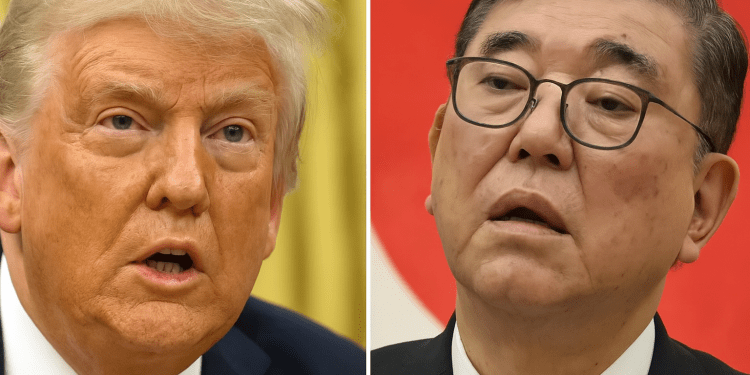The U.S.-Japan war of words was heating up in the run-up to the global tariffs deadline of restarting. U.S. President Donald Trump has called into question whether the pair will reach a trade deal, stoking uncertainty around one of the U.S.’s key alliances in Asia.
Trump Expresses Doubt About a Trade Deal With Japan
Trump initially cast doubt on reaching a trade deal with Japan by the July 9 deadline to avoid reinstating tariffs, speaking aboard Air Force One on July 1. “I don’t know if we’ll make a deal. Japan has had a free ride for far too long,” he told reporters.
Trump said that Japan had been “spoiled” and that if the administration could not make a fair deal with Tokyo, it would consider imposing steep tariffs — as high as 35% — on Japanese imports ranging from rice to automobiles.
Trump Speaks on Japan Trade Deal: “Very Spoiled” and Unlikely to Reach Agreement
Why Japan Is a Vanguard
The American trade gap with Japan in 2024 was $69.4 billion. Japan does import some American goods — including about $354 million in U.S. rice and more than 14,000 vehicles a year — but Trump has complained that the trade relationship is lopsided. “They don’t buy our cars and won’t take our rice,” he said at the press briefing.
Japan has raised its imports of rice from the United States a bit, to compensate for higher prices and bad domestic harvests, but the subject remains touchy with Tokyo’s agricultural interests.
Internal Politics Complicate Japan’s Position
Japanese negotiators, under heavy pressure before parliamentary elections, are led by Economy Minister Ryosei Akazawa. Agriculture is a politically influential industry in Japan, and Akazawa has promised not to sacrifice it in trade negotiations. “Our farmers are the heart of the country, and we’re working very, very hard.” We will not negotiate over them.”
Prime Minister Shigeru Ishiba also struck a similar note, calling for a trade deal that would remove U.S. tariffs on Japanese autos. “We are not only a trade partner. We are the largest foreign investor in the U.S.,” he said.
Power Dynamics at Play
The leverage Japan has is not in trade alone. And with more than $1 trillion invested in U.S. Treasury securities, Tokyo is also one too big to ignore in terms of American financial stability. Yet the Trump administration seems less interested in broader strategic ties, focusing more on the immediate trade imbalance.
The Stakes Are Rising
If there is no agreement, the U.S. might reintroduce tariffs or expand them, such as by:
- 25% tariffs on all Japanese cars and auto parts
- Tariffs of 50% on steel and aluminum
- Up to 35% on other products like rice and electronics
Those measures could reverberate through Japan’s economy, which is heavily reliant on export to the U.S. as its largest single export destination.
Conclusion: A Deal Still Possible?
Trump is skeptical, but negotiations are ongoing. Japan has not yet answered the tariff threats, but local reports suggest that back-channel talks are taking place. It is unclear whether the two sides can bridge that gap before the July 9 expiration.
The result could reshape trade relations between the United States and Japan for years to come.

